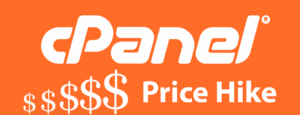
Let’s be honest—if you’re over 40 and starting to squint at small print, you’re probably reaching for your reading glasses more often than you’d like to admit. Now, combine that with a job or hobby that requires eye protection—say woodworking, welding, lab work, or even heavy-duty yard work—and suddenly you’re juggling two types of eyewear. Not fun.
This is where reading safety glasses step in. They’re designed for people who need both magnification and eye protection. Think of them as your regular readers—but built like a tank.
In this article, we’ll break down why these glasses are more than just a convenience, what to look for when buying a pair, and which brands are worth your attention.
Why Combine Reading and Safety Glasses?
You could wear your readers under a pair of safety goggles, but we all know how that ends—slipping frames, foggy lenses, and general discomfort. Worse, that setup isn’t even always safe. If something goes flying, your everyday readers won’t hold up.
That’s why the concept of reading glasses safety glasses exists: to merge visual clarity with occupational protection—no need to stack glasses or compromise on comfort or security.
Whether you’re a contractor reading blueprints, a machinist checking measurements, or just someone doing weekend projects, you shouldn’t have to squint or risk your sight.
Who Needs Them Most?
If you fall into any of these categories, reading safety glasses are a game changer:
- Tradespeople (plumbers, electricians, carpenters)
- DIYers and hobbyists
- Factory and warehouse workers
- Lab technicians
- Outdoor workers (landscapers, construction crew)
- Mechanics and welders
- Aging workers who still want to work smart and safe
Basically, anyone who reads or works close-up in environments where eye protection is required.
What Makes a Great Pair of Reading Safety Glasses?
Not all safety glasses with readers are created equal. Some are just glorified plastic. Others are actually designed to protect and last.
Here’s what to look for:
1. ANSI Z87.1 Certification
If the glasses don’t have this, they aren’t legit safety glasses. ANSI Z87.1 ensures they meet U.S. standards for impact resistance and eye protection.
2. Bifocal or Full Lens Magnification
Bifocal lenses have a clear top and a magnified bottom—great for people who need to look up and down constantly. Full-lens magnifiers are good for extended close-up tasks like reading or soldering.
3. Anti-Fog and Scratch-Resistant Coating
You don’t want your lenses fogging up mid-task. Brands like 3M and Pyramex offer top-rated anti-fog options.
4. Comfort Fit
Rubber nose pads, adjustable temples, and lightweight materials make all the difference when you’re wearing them for hours.
5. UV Protection
Even indoors, some environments expose you to UV. If you work outdoors, this is non-negotiable.
Top Brands That Nail the Job
1. Pentax Safety Glasses
Pentax is known for producing high-quality safety eyewear with prescription capabilities. Their bifocal readers are ANSI-rated, sturdy, and available in multiple diopter levels.
2. 3M
Trusted in both industrial and medical settings, 3M offers reader safety glasses with reliable magnification and excellent clarity. Their SecureFit series is lightweight and ergonomic.
3. Pyramex
Affordable yet tough, Pyramex’s safety readers come in a wide range of magnifications and styles. They’re ANSI-rated and perfect for budget-conscious pros.
4. Edge Eyewear
These guys mix style and protection seamlessly. Edge offers bifocal safety glasses with fog-resistant lenses and flexible frames that fit like a glove.
5. Bolle Safety
Bolle gives you European design with ANSI compliance. Their readers are ideal for labs or cleanrooms where clarity and comfort matter most.
Mistakes to Avoid When Buying
Let’s skip the trial-and-error, shall we?
- Don’t guess your magnification. Get your eyes tested. Too strong or too weak, and you’ll end up with eye strain or headaches.
- Avoid unbranded knock-offs. If it doesn’t list ANSI Z87.1 or any real specs, skip it.
Don’t ignore the environment. If you’re around chemicals, opt for goggles or sealed frames. If it’s dust, side shields matter more. - Don’t assume all bifocals are the same. Some have tiny magnifiers; others have larger readers. Pick what suits your task.
Do Reading Safety Glasses Replace Prescription Safety Glasses?
Short answer: not quite.
If you wear progressive or distance correction lenses, bifocal readers won’t cut it. But if your only issue is presbyopia (age-related trouble reading small text), reading safety glasses are perfect.
And yes, you can still get prescription safety glasses with bifocal or progressive lenses from brands like Pentax or via online stores like Safety Eye Glasses.
Where to Buy Them
- EyeWeb.com – Offers ANSI Z87.1 rated bifocal and prescription options with brand choices like Pentax and Wiley X.
- Amazon – Look for brands like Pyramex, 3M, and Edge Eyewear (check for certifications).
- SafetyEyeGlasses.com – A wide selection of safety eyewear for all work environments, with reading glasses and Rx options.
Final Thoughts: Vision and Safety Shouldn’t Compete
You shouldn’t have to choose between seeing clearly and protecting your eyes. With reading safety eye glasses, you get both—and in one pair.
So whether you’re laying tile, fixing up a car, or managing a team on the floor, the right eyewear keeps you focused and safe. And with the right brand, you won’t even think about them—they’ll just do the job.





